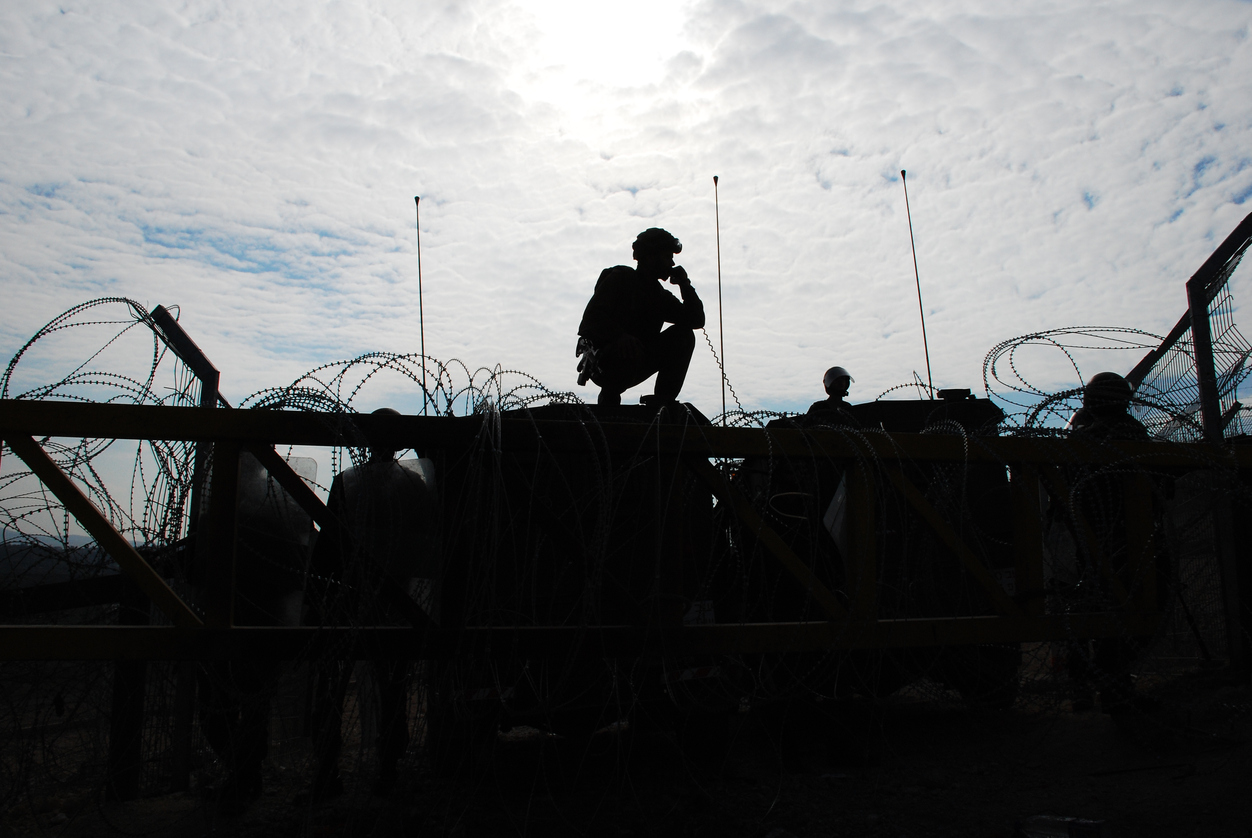A shared humanity: Recognizing and dismantling radicalized communication
Positioning your responses to The Middle East conflict as a humanitarian issue makes room for bridge-building.

Last week was exhausting.
Amid the exhilaration and engagement at Ragan’s Internal Communications Conference in Seattle last week, several comms leaders connected with me in person to talk through how they can best support those with personal, emotional and religious connections to the war in Israel and Gaza. Meanwhile, the Ragan Advisory Board conferred in a thread with colleagues sharing executive internal statements, lists of resources and more.
We arrived at an overwhelming consensus that communicators must frame any responses to what’s happening as a humanitarian issue, first and foremost. More than a tactic to evade political and ideological waters, this approach is a tacit acknowledgment that the loss of human life is universally tragic — and that going tit for tat feeds into the cycle of polarizing discourse.
Of course, any attempts to cover the tragedy are stigmatized — our story compiling company responses to the conflict was picked apart by one reader on LinkedIn who took issue with the description of Hamas as a “Palestinian militant group.” The commenter offered a history of Hamas and its 1997 designation as a terrorist organization by the U.S.
“As communicators, we know that words matter,” they wrote. “Sanitizing how we refer to Hamas dehumanizes the victims. If a militant kills someone perhaps there’s a thought: maybe it’s justified. Killing civilians is never justified. It’s terrorism.”
This is a “yes, and” moment — an inflection point for taking the temperature of discourse down by considering the weight of our words that may have been lost on the didactic commenter and their approach. The binaries we set up by getting into the “who’s justified” conversation risk becoming called false equivalencies by those who point out the Israeli government has killed civilians, too. Whether acts of violence and brutality are sanctioned by a government does not, in any way, mitigate the loss of human life or diminish the history of either culture’s spiritual relationship to the land.
For communicators, it’s also a moment when your affected internal and external stakeholders — be they Israeli, Palestinian, Muslim, Jewish or close to someone who is — are also exhausted.
As an American Jew, my exhaustion stems from a sea of non-Jewish and non-Muslim people telling me how to feel. It comes from the education I’ve received about Israel and Zionism in Hebrew School clashing against tenets of pacifism that I was raised on and the understanding of constructive communication styles that I’ve come to learn. It also comes from the constant need to explain the intersectionality of Jewish identity to non-Jews, from helping others gain perspective on the global stakeholders who are vested in the Israeli government’s success (including the evangelical American right wing).
At this inflection point, I find peace and energy in the shared sentiment that people are not their governments.
Holding the space necessary to effectively work through conflicting emotions is doubly exhausting when every word is overanalyzed, deconstructed, and attacked. The loudest voices are often the least nuanced. It feels a lot like this:
In these times, it’s crucial to recognize that the propensity to meet an emotional moment with an emotional reaction is only human. It’s also crucial to recognize how that emotional reaction will very likely trigger an equal and opposite emotional reaction. That’s Newton’s Third Law, right?
A buddy I hung out with in Seattle following the conference framed this spiraling, escalating emotional chain of responses as “radicalized communication.” I called him out on the loaded context of that first word, but the more we talked about it, the more we found that parallels were apt between the emotional conditioning that occurs during an ideological radicalization process and the way an emotional message elicits increasingly emotional responses.
But showing emotion and responding emotionally are two different things.
Consider that, in the Jewish faith, sitting shiva when a loved one dies is a weeklong grieving process. Consider how that first week of this war when Israeli Jews buried their dead — last week — was one of spiritually intense mourning and introspection for thousands. Now consider the long-held best crisis communications practice to publish a holding statement out there quickly that acknowledges, aligns and assures stakeholders of your organization’s values and commitments.
Holding these two truths together, it’s easy to see how the standard comms playbook might not be considerate to all stakeholders.
Choosing humanity is taking a stand
Much of this conversation among communications leaders in Seattle last week focused on who the right person is to put out the message. Some bemoaned their executives who felt compelled to say something but didn’t mention Israel or Gaza by name, instead issuing a tepid response akin to “thoughts and prayers.” In such instances, perhaps their CEO wasn’t the right voice for the moment.
Contrast that with the CEOs who put humanity first by putting employees first. Microsoft CEO Satya Nadella’s message stands out as a notable, to-the-point example:
Heartbroken by the horrific terrorist attacks on Israel and the escalating conflict. My deepest condolences are with all those killed and impacted. Our focus remains on ensuring the safety of our employees and their families. Below is a message we shared with Microsoft employees…
— Satya Nadella (@satyanadella) October 11, 2023
Beyond condemning the violence, the pressure to “take a stand” shouldn’t become too methodical here. Putting your people first, and showing concern for your affected stakeholders, is taking a stand. In Microsoft’s case, this approach reached across the aisle. It surfaced in a message that Executive Vice President and Chief Human Resources Officer Kathleen Hogan shared with employees:
We have nearly 3,000 employees in Israel directly impacted. We have Jewish employees around the world who are also experiencing grief, fear and anxiety as hatred and vitriol increase. We have Palestinian employees globally who are deeply concerned for the safety of their loved ones in the region and stand against these acts of terrorism.
This portion of the statement serves as a bridge-building function that walks back the spiral of radicalized communications. It doesn’t discount or dismantle the language condemning the terrorist attacks, hatred and brutality. But it sets a tone for constructive discourse and discussion, especially at the end of the post when Hogan writes, “Across the company, let us stand together in our shared humanity.”
Bridge-building communications
The idea of bridge-building brings to mind a fascinating report from 2022, joint authored by Business for America and the Civic Health Project, wherein 69% of companies surveyed said that America’s growing social and political divides can manifest at work to create negative effects on their employees and company culture.
Once again, the complexities and intersectionality of American identity offer an opportunity for communicators within diverse workforces to better prepare leaders for difficult conversations at a regular cadence while simultaneously training employees to navigate tense interactions.
During a Ragan fireside last spring, Civic Health Project Executive Director Kristin Hansen emphasized how communicators are in a position to bridge the divide with brand storytelling. It goes back to understanding the weight of words and language as they manifest in narratives:
Perpetuating a narrative that people not like us are boogeymen can make us feel enraged, Hansen says. This approach often manifests when some default to language that the other side is overrun by communists or fascists, suggesting that a new civil war is coming and the other side is to blame. Hansen calls the people who intentionally perpetuate these narratives “conflict entrepreneurs,” claiming that they intentionally craft stories that elicit fear and anxiety to profit from making audiences feel divided. This can mean getting people to vote in a certain way, give their attention to something or buy something. She refers to the fear and anxiety as “toxic sludge.”
In the spirit of Dr. Ibram X. Kendi’s landmark work on antiracism, let’s consider that just as someone’s actions can either be “racist” or “antiracist”, we all have the propensity to become “conflict entrepreneurs” when we feel a personal stake in the conflict at hand.
Similarly, we have the power to identify our radicalized communication behaviors and walk them back — acknowledging and honoring the emotion of the moment in our responses while avoiding acting on the emotional impulses that surface.
When this happens, we can avoid being knee-jerk just because the pressure to say something is so high. We don’t negate the fact that stakeholders expect to hear from us, nor do we succumb to ‘both sides-ism’ and avoid taking a stand — but instead realize our people, and our shared goals as human beings, are always the place to land.
Justin Joffe is the editor-in-chief at Ragan Communications. Before joining Ragan, Joffe worked as a freelance journalist and communications writer specializing in the arts and culture, media and technology, PR and ad tech beats. His writing has appeared in several publications including Vulture, Newsweek, Vice, Relix, Flaunt, and many more.








I’m very moved by this piece. It helps on a personal level to find a way to discuss this without seeming to avoid the issues, without demonizing anyone, with showing compassion for all the innocents impacted.
I appreciate this take!